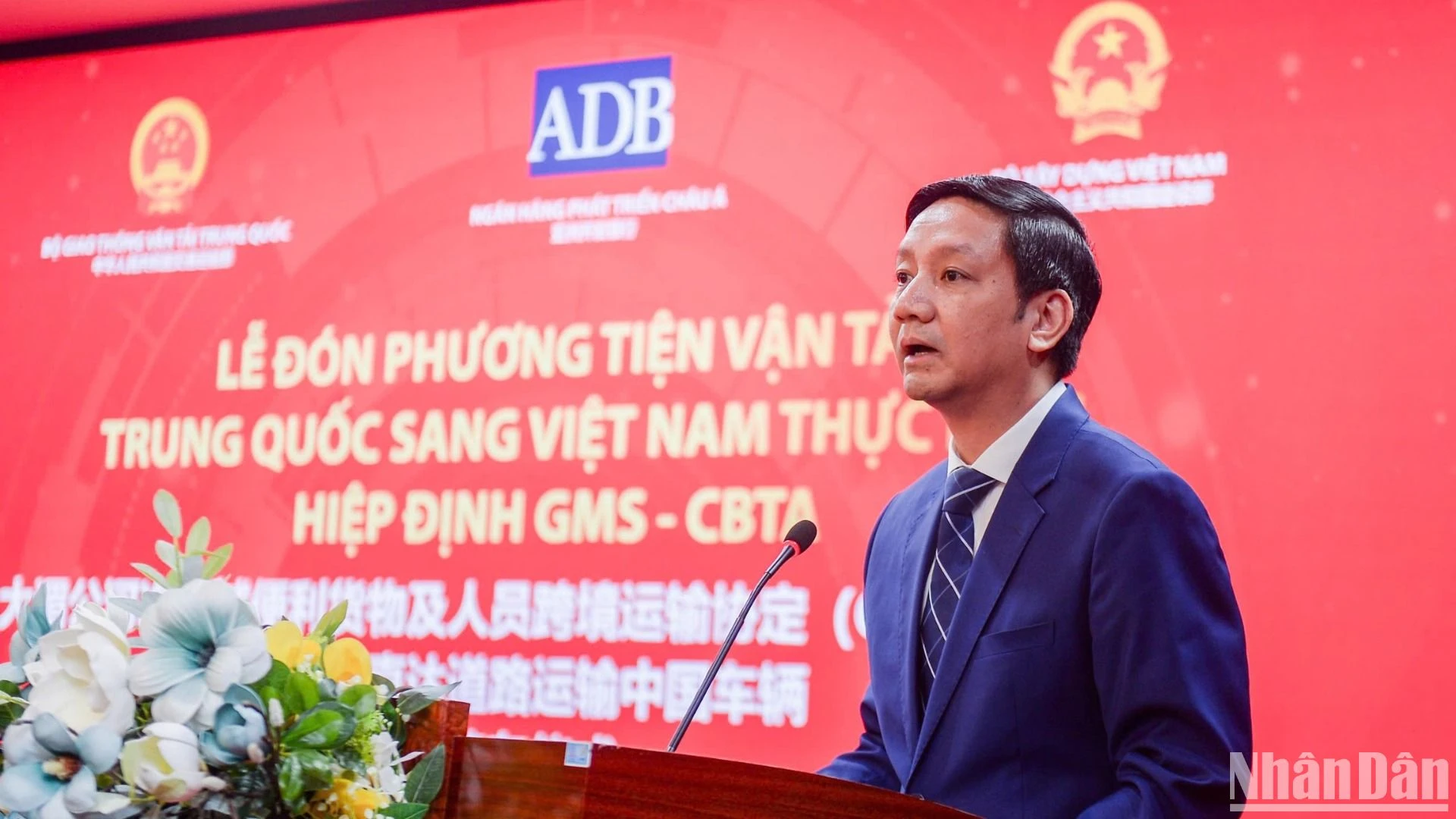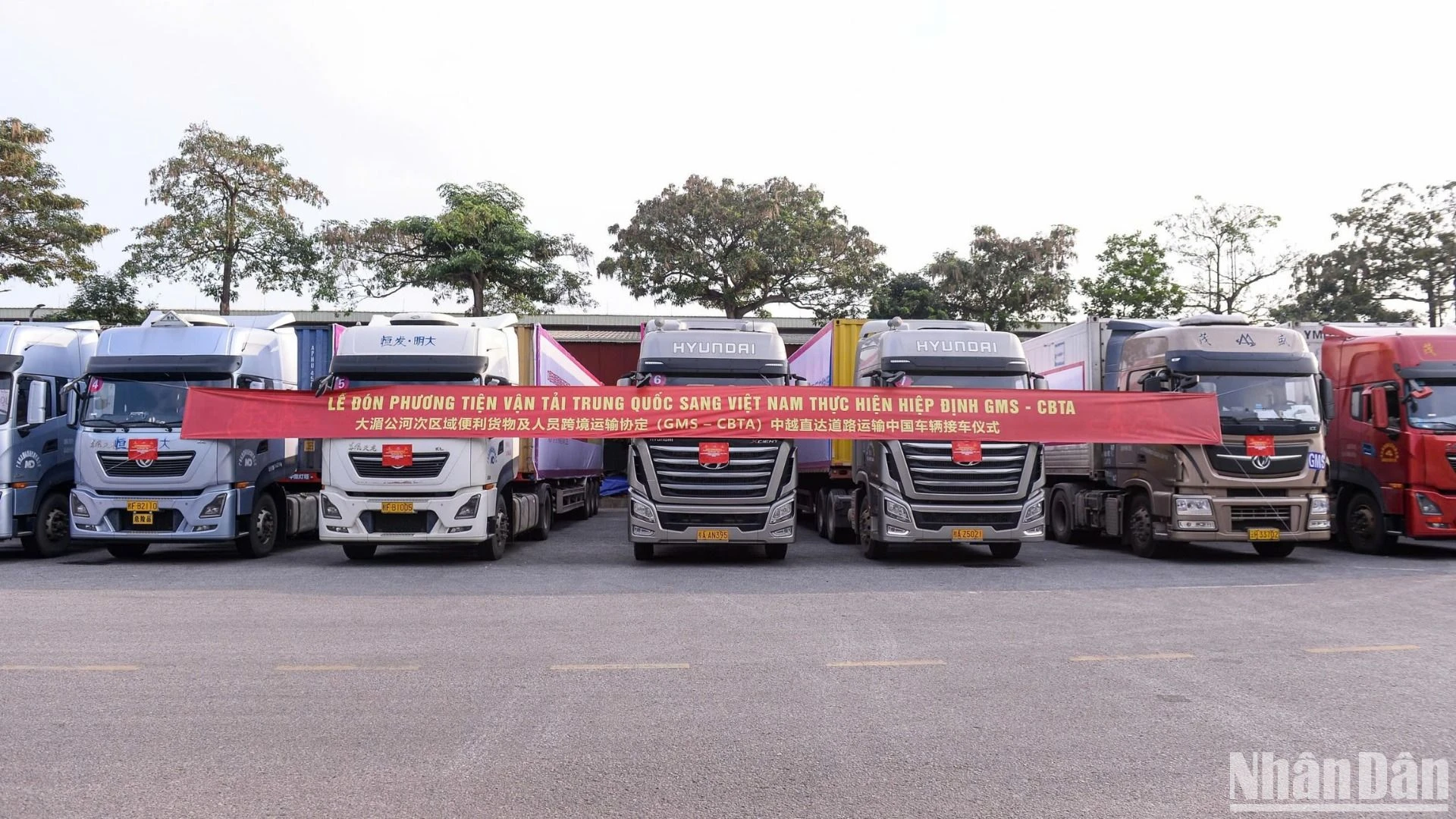The event marked a significant milestone in Viet Nam–China transport cooperation, helping to realise commitments to facilitate the movement of goods, vehicles, and people among GMS-CBTA member countries, including Viet Nam, China, Laos, Cambodia, Thailand, and Myanmar.
Two key transport routes have been officially launched: Kunming–Hekou (China)–Lao Cai–Ha Noi–Hai Phong, and Nanning–Youyi Pass (China)–Huu Nghi–Ha Noi.
These major transport arteries handle high volumes of import–export cargo and play a vital role in Viet Nam–China bilateral trade.

Delivering remarks at the launch, Bui Quang Thai emphasised that the operation of these transport routes would not only reduce costs, time, and administrative procedures for businesses but also promote regional trade, investment, and logistics.
“Today’s event is not only about technical or infrastructure progress; it is a vivid symbol of practical and effective cooperation between the two nations,” Thai stated, adding that this marked the next step following trial transport operations in April 2025.
Zhang Tie, Deputy Director of the Transport Services Department under the Chinese Ministry of Transport, affirmed that Viet Nam and China are strategic partners in the Belt and Road Initiative. The new transport route will shorten shipping distances, accelerate cross-border supply chains, and strengthen linkages between the China–ASEAN Economic Corridor and Viet Nam’s “Two Corridors, One Belt” strategy.

At the event, representatives of both countries pledged close coordination among relevant authorities, local administrations, and transport enterprises to ensure efficient and sustainable operation of the new routes. Viet Nam also expressed its hope to continue receiving technical and policy support from ADB to expand and enhance the performance of GMS-CBTA transport operations in the future.
The successful launch of this cross-border transport route into Viet Nam’s interior is expected to facilitate business operations, expand supply chains, strengthen domestic–international economic connection, and contribute to the comprehensive and sustainable development of border economic zones.
